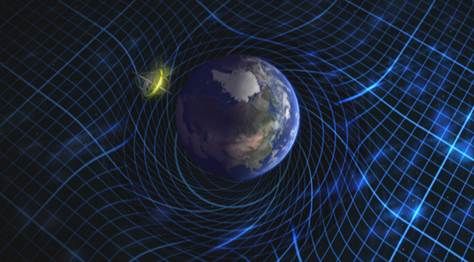A new computer simulation shows that in the brain circuit, social network, and cosmic expansion, there may be some basic natural laws that dominate.

Beijing time, November 30th, according to a new computer simulation study, the universe may grow like a huge brain. The results of this study were published in the journal Science Report on November 16. The article said that some undiscovered basic laws may dictate a variety of large or small systems, from the transmission of electrical signals between brain cells, to the expansion of social networks, and even the expansion of the universe.
Participants in the study, physicist Dmitri Krioukov from the University of California, San Diego, said: "For different networks, such as the Internet, brain neurons, or social networks, the laws of natural growth are similar." The study The main result is that there may be a basic rule of domination in these networks.
"At first glance, these networks are very different, but the question is whether there is some basic law that can describe them," said Kevin Bassler, a physicist from the University of Houston, "their research Very meaningful. "Besler did not participate in the study.
Similar networks
Previous research has revealed that the brain circuit is very similar to the Internet. However, despite functional commonalities, no one has yet been able to develop an equation that can perfectly predict how computer networks, brain circuits, or social networks will grow over time.
Einstein's relativistic equation explains how matter bends space and time. Using this equation, physicists can trace the scene of the universe's birth in the Big Bang 14 billion years ago and study the expansion of the universe over a long period of time thereafter. Therefore, Krioukov's team is thinking about whether the accelerated growth of the universe can help explore social networks or the growth of brain circuits.
Brain cells and the Milky Way
Researchers have developed a computer simulation program that divides the early universe into the smallest possible unit, in which the particles of the Biatom atom are small. The simulation connects all the quantum (or node) in a huge, causal celestial network (the movement of any substance is lower than the speed of light, so when a person hits a baseball on the earth, the ripples it produces The effect cannot reach a certain alien in a galaxy in a reasonable time, which means that these two space-time regions have no causal effect).
As the simulation progressed, more and more space-time units were added to the history of the universe. Krioukov said that the "network" connection of matter in the galaxy is also growing.
When the researchers compared the history of the universe with social networks, or ways in which brain circuits grew, they found that these networks all expanded in a similar way: they coordinated the relationship between similar nodes and nodes with multiple connections. For example, when cat lovers go online, they not only frequently visit large websites such as Google and Yahoo, but also browse the websites of many cat lovers or watch videos about kittens. Similarly, adjacent brain cells tend to connect, but they also seek to establish connections with neurons that connect many other cells.
This similarity between large and small systems is probably not accidental, Krioukov said: "This is an instant signal for physicists, which means that there is something in the operation of nature that humans have not yet known." Perhaps in these different networks, some unknown laws govern their operation. "The research results remind us that it may be time to start looking for these patterns." Krioukov concluded.
Large Animal Trap Cage,Metal Animal Trap,Collapsible Construction Trap Cage,Anti-Rusty Animal Trap Cage
Hebei Liebang Metal Products Co.,Ltd , https://www.liebangtraptool.com
